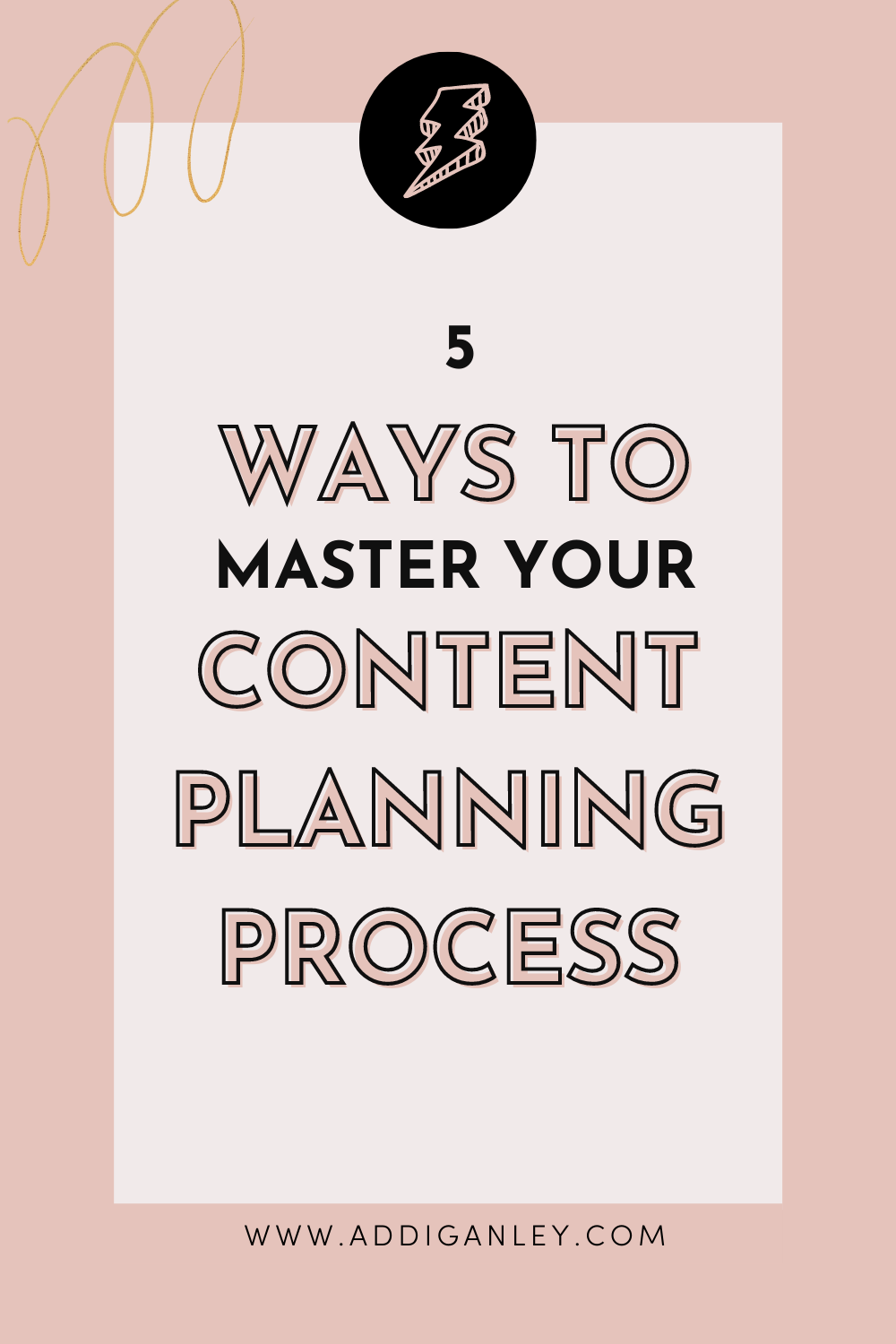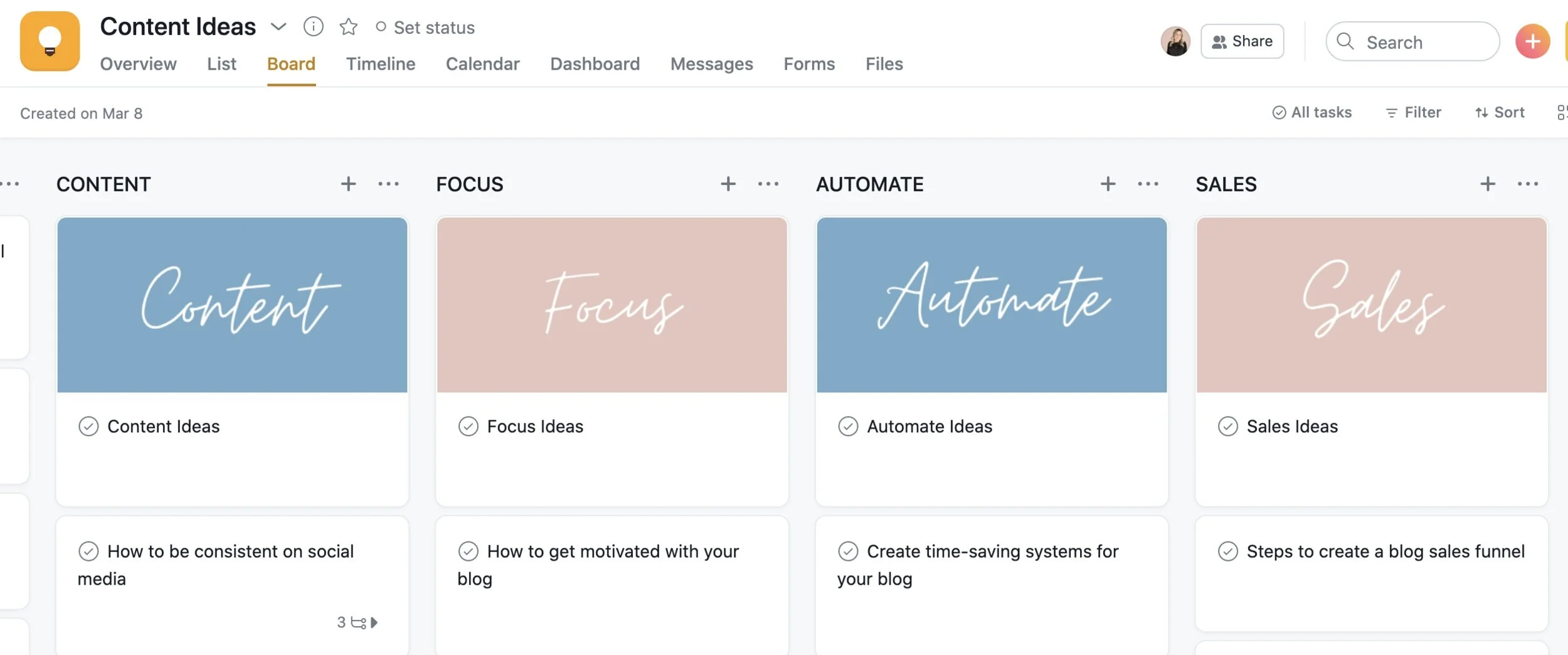5 Ways to Master Your Monthly Content Planning Process
You sit down at your computer because you want to schedule a new post to your Instagram account, but you keep staring at the blank screen..
What should you post about?
What image should you upload?
What should you write in your caption?
You felt motivated early, but now it just feels really hard to get any content created.
If you always find yourself scrambling to create content then you NEED to start using this monthly content planning process.
I’m going to walk you through the 5 steps I do at the beginning of every month.
Not only does it alleviate the stress of knowing what to post about, but it allows me to get ahead of schedule so I don’t feel frustrated with my content.
MONTHLY CONTENT PLANNING PROCESS
Step 1: Goals
Before I start the process of planning my content the very first thing I do is look at all of my sales events, important dates, launches and promotions.
I want to make sure that the content I create aligns with my goals and I am not creating something just for the sake of showing up on a social media platform or posting something new on my blog.
Do not skip this step in the process.
Your content is infused in everything you do so when you are planning you want to make sure it supports all of your sales activities.
We go through different seasons in our businesses so it’s important that our content lines up with what we are doing. For example, you might be in a season of growth or launching a new product.
If so, your content would be different for those types of things. This is why I always start here when I am planning my content.
You may also like: What is an Evergreen Funnel?
Step 2: Content Categories
The next step in the process is understanding your content pillars or what I like to call buckets.
This is literally the categories that you create content about.
For example, if you help your audience lose weight by selling a 12-week workout plan your buckets might include Workout Motivation, Healthy Meal Plans and Exercise Tips.
When you focus on just a few categories it will make the planning and creating process for your content SO.MUCH.EASIER.
Depending on the content you are already creating you may be doing this but don’t have it organized yet.
What I like to do is place any ideas that I have for content underneath a specific bucket to make sure I am staying consistent with my messaging and the products I have to offer.
When I am planning my content for the month I will come to my buckets and choose ideas that align with my goals and sales activities that we talked about in step 1.
For example, if I am re-launching a particular online course I will make sure the content I plan to create for the month surrounds that theme or solution my course has to offer. I will then go to the ideas I have under that bucket.
Doing this makes the planning process go a lot faster.
Plus, it saves me so much time because I have ideas to pull from.
Step 3: Schedule + Frequency
Before I start creating my content calendar for the month I decide on how often I am going to be posting.
This step is your personal preference.
There are a ton of studies out there telling you when or how often to post content, but I have found that when I am consistent with the schedule I choose I have so much more success.
It’s not about posting X amount of times, but posting consistently with the timeframe you choose.
Your schedule or posting frequency will depend on the amount of time you have to work each week and the commitment you can make to it.
For me, I only work about 12-15 hours per week, so I know how much content I am capable of creating.
Your schedule might be to create 2 YouTube videos per month, show up on Insta stories 3x per week, post to your Instagram feed 2x per week and email your list every Tuesday morning.
Deciding on your schedule or frequency will allow you to plan enough time to not only create your content but also execute it.
Step 4: Due Dates, Deadlines + Workflows
The next step is to plan your due dates and deadlines.
Take out your calendar for the upcoming month and add in all the content you committed to create and share with your audience.
Pencil in when you will be creating it and when you will be publishing or posting it.
This will help you to get the big picture of your content and to make sure you have enough time to get ahead of schedule.
Again, I like to use Asana, but you use whatever planner you normally use to add in all of your content.
If you want to use Asana, but you’re not sure how to create a calendar with it you can read about how to create a content calendar using Asana here.
Once I have in when everything will be posted i then go back and add in deadlines for when I need to complete all the tasks so I am not frantically creating content the night before I want it to go live.
This includes deadlines for research, SEO work, outlining, writing, editing, scheduling, etc.
One thing I like to do is break up the tasks as much as I can. I will batch similar tasks to save time and so that the process doesn’t feel as overwhelming. You can read more about how to batch your content.
I have a workflow I follow each time I create new content. This helps take the guesswork out of the entire process.
This template saves so much time!
I definitely recommend that you add self-imposed deadlines for your content so that you can hold yourself accountable and stay on track.
Otherwise, you might find yourself constantly pushing back these tasks because you don’t have a due date for it.
Step 5: Repurposing
Before I create any of the new content, I always look at how I can repurpose content I’ve already created.
Dig into your archives and see if you can repurpose some of your popular content that aligns with your goals and the sales activities that you have planned for the month.
Think about how you can add in some bonus content or update it to make it more relevant.
Be sure to take the time to adapt it to the platforms you use to promote your content. You don’t want to just copy and paste it.
Read more about how I repurpose content:
How to Repurpose Content
Tech Tools to Repurpose Content
3 Myths About Repurposing Content
Also, think about all the ways you can repurpose this new content you’ll be creating throughout the month.
Can you break into several different pieces of content that can be shared over a few weeks?
Can you make a small video from it?
Can you pull out quotes?
Can you make several graphics to promote it?
If you need a complete repurposing system, I got you! Check out my Content Repurposing Toolkit here. It includes everything you need to promote your business WITHOUT creating more content.
Once you start to implement these 5 steps into your content planning process you will see how quickly they become a part of your routine.
Having a plan and getting ahead of schedule are key to being consistent with your content marketing.
Comment below and share what steps are part of your content planning process?





